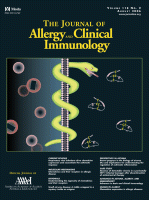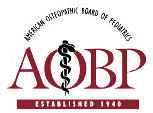Related Research Articles

Allergies, also known as allergic diseases, are various conditions caused by hypersensitivity of the immune system to typically harmless substances in the environment. These diseases include hay fever, food allergies, atopic dermatitis, allergic asthma, and anaphylaxis. Symptoms may include red eyes, an itchy rash, sneezing, coughing, a runny nose, shortness of breath, or swelling. Note that food intolerances and food poisoning are separate conditions.

A general practitioner (GP) or family physician is a doctor who is a consultant in general practice.
Internal medicine, also known as general internal medicine in Commonwealth nations, is a medical specialty for medical doctors focused on the prevention, diagnosis, and treatment of internal diseases in adults. Medical practitioners of internal medicine are referred to as internists, or physicians in Commonwealth nations. Internists possess specialized skills in managing patients with undifferentiated or multi-system disease processes. They provide care to both hospitalized (inpatient) and ambulatory (outpatient) patients and often contribute significantly to teaching and research. Internists are qualified physicians who have undergone postgraduate training in internal medicine, and should not be confused with "interns", a term commonly used for a medical doctor who has obtained a medical degree but does not yet have a license to practice medicine unsupervised.
A medical specialty is a branch of medical practice that is focused on a defined group of patients, diseases, skills, or philosophy. Examples include those branches of medicine that deal exclusively with children (paediatrics), cancer (oncology), laboratory medicine (pathology), or primary care. After completing medical school or other basic training, physicians or surgeons and other clinicians usually further their medical education in a specific specialty of medicine by completing a multiple-year residency to become a specialist.
Internal medicine-pediatrics, or med-peds, is a medical specialty in which doctors train to be board certified in both internal medicine and pediatrics. A residency program in med-peds is four years in length, contrasted with three years for internal medicine or pediatrics alone. Upon completion of a med-peds residency, a doctor can practice in the areas of internal medicine, pediatrics or can complete a fellowship program to further specialize in an internal medicine or pediatrics sub-field.
The American Board of Medical Specialties (ABMS) is a non-profit organization established in 1933 which represents 24 broad areas of specialty medicine. ABMS is the largest and most widely recognized physician-led specialty certification organization in the United States. The other certification organizations in the United States are the American Board of Physician Specialties and American Osteopathic Association Bureau of Osteopathic Specialists.

The Journal of Allergy and Clinical Immunology (JACI) is a monthly peer-reviewed medical journal covering research on allergy and immunology. It is one of three official journals of the American Academy of Allergy, Asthma, and Immunology. The journal was established in 1929 as the Journal of Allergy and obtained its current name in 1971. The name change was purportedly related to a change in the attitude among physicians about the breadth of applicability of the term "allergy". The journal has been published under the Mosby imprint since its inception.
Founded in 1943, the American Academy of Allergy, Asthma & Immunology (AAAAI) is a professional medical membership organization of more than 7,000 allergists/immunologists and related professionals around the world with advanced training and experience in allergy, asthma and other immunologic diseases. The Academy is dedicated to the advancement of the knowledge and practice of allergy, asthma and immunology for optimal patient care.

Thomas Alexander Evelyn Platts-Mills, FRS son of British member of parliament and barrister John Platts-Mills, is a British allergy researcher and director of the Division of Allergy and Clinical Immunology at the University of Virginia School of Medicine.
A fellowship is the period of medical training, in the United States and Canada, that a physician, dentist, or veterinarian may undertake after completing a specialty training program (residency). During this time, the physician is known as a fellow. Fellows are capable of acting as an attending physician or a consultant physician in the specialist field in which they were trained, such as internal medicine or pediatrics. After completing a fellowship in the relevant sub-specialty, the physician is permitted to practice without direct supervision by other physicians in that sub-specialty, such as cardiology or oncology.
Medical education in Philippines is principally offered and developed by accredited and government recognized medical schools in the country.
Angel M. Marchand was a Puerto Rican allergy researcher and clinician.
The Board of Certification in Emergency Medicine (BCEM) can be achieved through the American Board of Physician Specialties, and is the second-largest organization offering board certification in the medical specialty of emergency medicine in the United States.
In 2006, hospice and palliative medicine was officially recognized by the American Board of Medical Specialties, and is co-sponsored by the American Boards of

The American Osteopathic Board of Internal Medicine (AOBIM) is an organization that provides board certification to qualified Doctors of Osteopathic Medicine (D.O.) who specialize in the prevention, diagnosis, and treatment of disease in adults (internists). The board is one of 18 medical specialty certifying boards of the American Osteopathic Association Bureau of Osteopathic Specialists approved by the American Osteopathic Association (AOA), and was established in 1942. As of December 2011, 3,072 osteopathic internal medical physicians held active certification with the AOBIM.

The American Osteopathic Board of Pediatrics (AOBP) is an organization that provides board certification to qualified Doctors of Osteopathic Medicine (D.O.) who specialize in the diagnosis and treatment of medical diseases in infants, children, and adolescents (pediatricians). The board is one 18 medical specialty certifying boards of the American Osteopathic Association Bureau of Osteopathic Specialists approved by the American Osteopathic Association (AOA), and was established in 1940. Certification in pediatrics has grown to over 1,000 diplomates over the last decade. It was reported in 2011, 477 osteopathic pediatricians held active certification with the AOBP. With single accreditation in place both osteopathic and allopathic residency training candidates are eligible to examine for certification with the American Osteopathic Board of Pediatrics.
The American College of Allergy, Asthma and Immunology (ACAAI) is an American professional association of immunologists, asthma specialists and allergists. The organization is headquartered in Arlington Heights, Illinois, United States of America.
Gail Ina Greenberg Shapiro was an American pediatric allergist based in Seattle. She was a faculty member at the University of Washington School of Medicine. In 2001, she became the first democratically elected president of the American Academy of Allergy, Asthma, and Immunology (AAAAI).
Frances Estelle Reed Simons is a Canadian physician and researcher. She was named to the Canadian Medical Hall of Fame in 2017.
Mariana Castells is a Spanish-American allergist who focuses on mast cell diseases, including mastocytosis, mast cell activation syndrome and hereditary alpha tryptasimia. Mastocytosis is a rare disease with limited treatment options. Castells works at Brigham and Women's Hospital in Massachusetts in the Department of Allergy, Rheumatology, and Immunology and at the Dana Farber Cancer Institute. She is also a professor of medicine at Harvard Medical School.
References
- ↑ "Definition of allergist | Dictionary.com". www.dictionary.com. Retrieved 2021-02-27.
- ↑ "AAAAI - What is an Allergist?" . Retrieved 2022-09-07.
- ↑ "ABAI: American Board of Allergy and Immunology" . Retrieved 2007-08-05.
- ↑ Royal College of Physicians (2003). Allergy: the unmet need. London, UK: Royal College of Physicians. ISBN 1-86016-183-9. PDF version Archived 2007-11-28 at the Wayback Machine
- ↑ House of Lords - Science and Technology Committee (2007). Allergy - HL 166-I, 6th Report of Session 2006-07 - Volume 1: Report. London, UK: TSO (The Stationery Office). ISBN 978-0104011492.